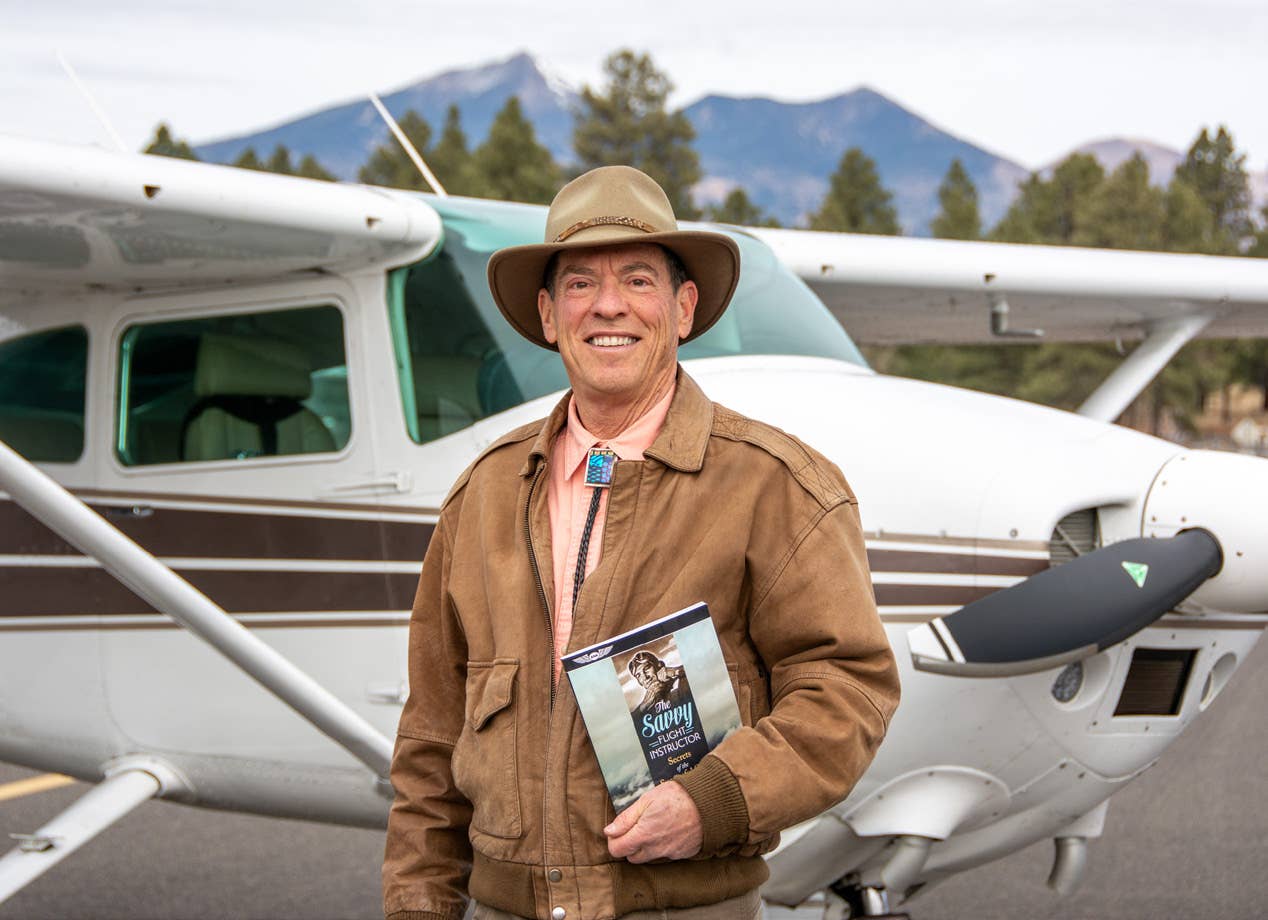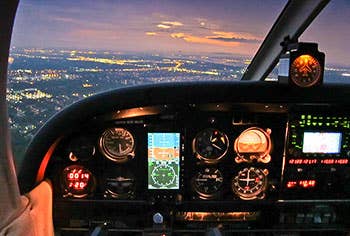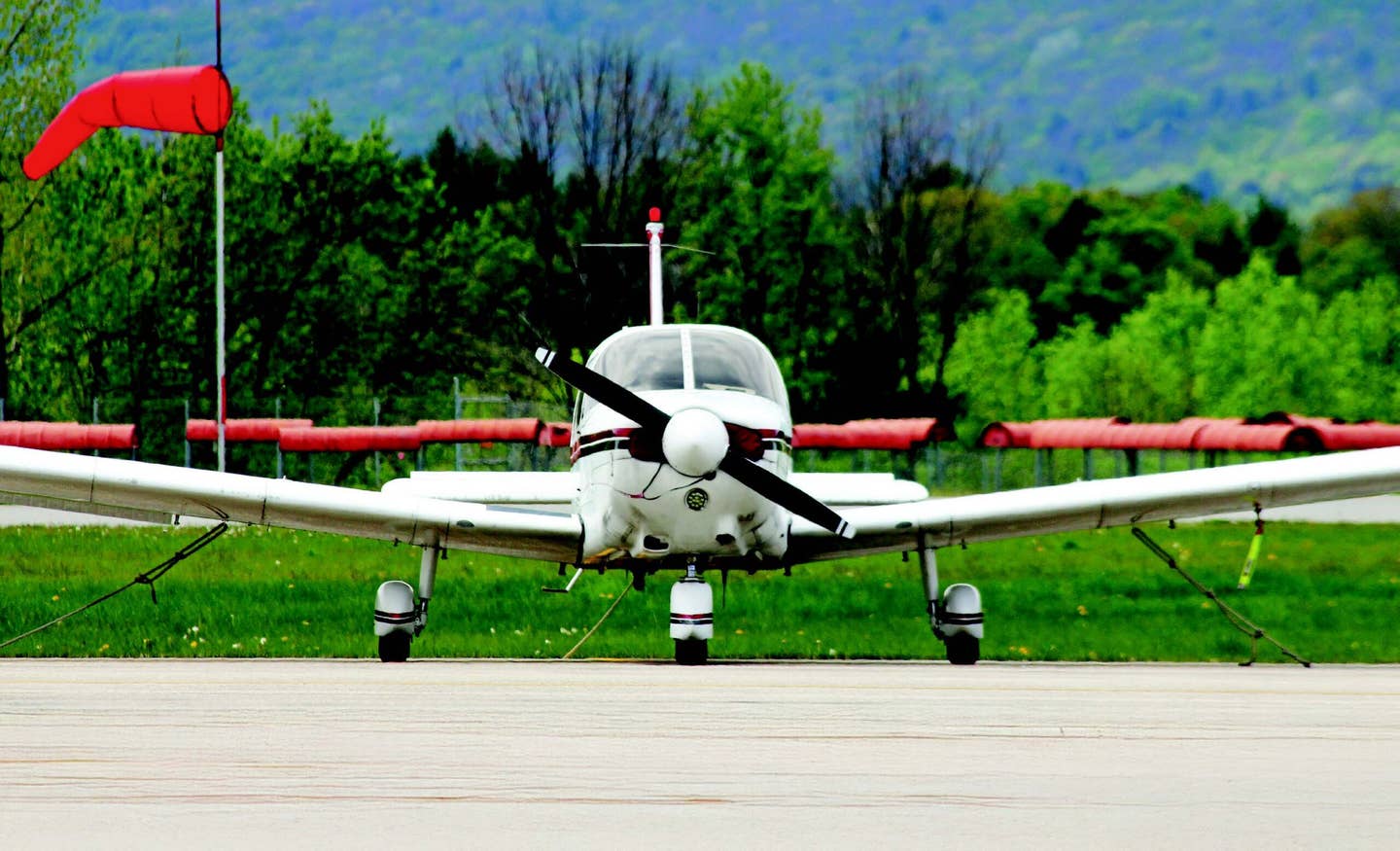
We walk you through the steps in detail to an aviation career. CraigRJD/iStock
“When should I begin training to become a professional pilot?” That’s a question that regularly pops up from people new to the aviation industry. The best answer is, “Now is a pretty good time.”
That rather-blatant nudge to get moving is meant to highlight the lag time between a person’s commitment to the profession and the amount of time needed to earn the ratings necessary to qualify for even the most elementary of flying jobs.
Training time varies considerably depending upon how much effort a student is willing to devote to their goal. If the potential pilot chooses a full-time flight training effort, the necessary pilot certificates and ratings could be in that person’s hands in less than a year. If the applicant chooses a part-time, after-work or on-weekends kind of training, however, earning those ratings could take years. Which ratings a pilot chooses and in which order are up to the aviator once they figure out their professional goal, but most who already hold a private pilot certificate will choose either the instrument rating or the commercial pilot certificate as the next step.
What It Means To Be a Professional Pilot
First, an important word about the industry. To many new aviators, a professional pilot is someone who flies for the airlines; to others, professional simply translates into being paid to fly. In reality, what makes a professional a true journeyman at their trade is more than just a handful of certificates. Professionalism is actually a state of mind that reveals a person’s attitude, character and dedication.
During flight training, students hear much about the standards to which they must rise in order to pass the ground and flight tests for any certificate or rating. For example, the FAA demands a passing grade of at least 70 percent on all knowledge tests. The FAA-designated pilot examiner who handles the practical flight tests also knows the minimum performance standards as they observe an applicant’s performance. What’s important to understand is, the standards by which everyone is judged are minimums to pass. Unfortunately, nature can sometimes throw situations at a pilot that demand they perform beyond the minimums.
The true professional is a person who desperately wants to exceed the regulator’s minimums. Professionals want to know more than simply the kind of clouds they see in the sky. Professional pilots want to understand how and why those clouds form and precisely what weather phenomenon might be waiting inside or nearby. The same holds true for a professional pilot’s understanding of air traffic control, aircraft systems or emergency procedures for the aircraft they’re flying. When a pilot has more than a minimal understanding of the airplane, its systems and the surrounding environment, there will emerge a distinct level of self-confidence that’s written all over the pilot’s face. That deep industry knowledge and self-confidence—not just hours logged—are what transform someone into the kind of pilot everyone wants to hire.
The Necessary Ratings
To fly for a fixed-wing regional or major airline in the US—both of which operate under FAR Part 121—a pilot must hold a valid airline transport pilot certificate that demands at least 1,500 hours of flight time in their logbook. The road to any professional flying job in the US begins much earlier than the ATP, however, with the need to earn a commercial pilot certificate, an instrument rating and, in most cases, a multiengine rating. The minimum certificates for flying in a charter or business-aviation flight department will certainly be a commercial, an instrument and, depending upon the type of operation, a multiengine rating. Some Part 135 charter companies and Part 91 flight departments today operating single-engine piston or turboprop aircraft could negate the need for a multiengine rating, at least right away, but any professional pilot will eventually need to hold a multiengine rating—so the best long-term plan should be based on when to earn the rating, not if.
You’ve heard it before, but the shorter the amount of time spent earning the needed ratings, the better—but not just because of the cost. Compressing training time means the new pilot will have forgotten much less and be much sharper for an interview than someone who took years to pass the exams. Imagine the knowledge level of someone who began driving lessons at age 16 but only climbed behind the wheel once a month or once every other month compared to the performance of a driver who completed lessons and passed the licensing test all in the same week. Learning to fly and earning your professional ratings is no different.
Any budding professional pilot must ask themselves if they’ll train at a local flight school (often known as a Part 61 institution) or if they’ll spend the money to attend one of the large flight schools full time (most likely operating under Part 141 regulations), even if the large school demands a significant financial commitment and possibly even a move out of town. Earning the needed ratings at a degree-granting university might seem like the best move, especially because those institutions open the door to federal student loans. Certainly a four-year degree is valuable, but that road through pilot training will take years. When a student graduates, they’ll have a handful of ratings but very little flight time. You can find a list of learn-to-fly resources as well as flight schools on Flying’s Learn To Fly hub and the FAA website.
Some of the large commercial flight schools, such as ATP Flight School, Epic Flight Academy and L3Harris Airline Academy, are geared to help full-time students earn the necessary pilot certificates in the shortest amount of time. Most can take a person from zero flight time to earning a flight instructor certificate in less than a year of full-time study. But don’t confuse fast with easy. These flight schools are anything but.
The real payoff comes in seniority, a notion anyone planning on an airline career should understand. A pilot’s seniority number is everything to their career. It determines the aircraft and routes a pilot flies, where they’re based, their vacations, and when a first officer is eligible to upgrade to the left seat as captain and the greater earnings that move offers. The seniority number is typically assigned on the first day of airline training. Within a class, numbers are based on age with the oldest pilot winning the highest number. This means stretching out your flight training for a number of years to save money, if your goal is to head for the airlines, is really going to cost money in the long run because a pilot who trains and is hired sooner will earn a lower seniority number.
A glimpse into some of the professional ratings presented here assumes a pilot already possesses a private pilot certificate. All ratings below require the applicant successfully pass a knowledge test, except for the multiengine.
Instrument Rating
As awe-inspiring is a first flight is, second on that list is piloting an airplane by reference to instruments in the climb as the sky brightens just before breaking out on top of the clouds. In addition to learning how to safely fly an airplane in weather conditions below visual flight minimums—no small hurdle on its own—an instrument rating teaches the pilot how to handle multiple tasks at a time, such as when approaching the destination airport in poor weather. The pilot is responsible for not only maintaining control of the airplane, or keeping a close eye on the autopilot, but also communicating with ATC, while preparing the aircraft navigation systems to guide the aircraft to the ground.
In years gone by, that included little more than ensuring the correct ILS frequency was set in the proper radio. Today, in technically advanced aircraft, GPS-guided approaches demand a more thorough understanding of not only how the approach procedure is constructed but also how to ensure the correct procedure is accurately loaded and activated in the airplane’s GPS navigator. Earning an instrument rating also includes reading and understanding the IFR enroute and approach charts, not to mention creating a solid understanding and respect for the weather in which the aircraft will be operating.
To be eligible for an instrument rating, the applicant must have received at least 40 hours of training from an instrument instructor either in an airplane or a simulator that includes a 250-mile cross-country flight and proficiency in a variety of instrument approaches. Some flight schools will combine the training for an instrument rating with that needed for a commercial certificate because an instrument rating is necessary to receive an unrestricted commercial pilot certificate. Without an instrument rating, a commercial pilot certificate would carry the following restriction: “The carriage of passengers for hire in airplanes on cross-country flights in excess of 50 nautical miles or at night is prohibited.”
Commercial Pilot Certificate
When a pilot earns a private certificate, most examiners will realistically explain they now possess a license to learn. When a pilot commits to training for a commercial pilot certificate, they’ve admitted they’re curious to learn more about what makes an airplane fly, as well as what can get in the way. They’ve also admitted they may not know quite as much about flying as they once thought they did.
The topics an applicant can expect to dig into on the surface might appear similar to those listed in the private pilot syllabus and include preflight preparation and procedures, airport and seaplane base operations, takeoffs, landings and go-arounds, performance and ground reference maneuvers, navigation, slow flight and stalls, emergency and high-altitude operations, and, of course, post-flight procedures.
But commercial applicants are pushed to develop better flying skills than what they needed to earn their private certificate. Accuracy landings for a commercial certificate require the pilot to pick a spot on the runway, pull the throttle back to idle and land within 200 feet of the point. Steep turns demand a bank angle not to exceed 60 degrees and the skill to maintain airspeed with plus or minus 10 knots at all times, not to mention the need to roll out within plus or minus 10 degrees of the required heading.
There are flight-time limits to be eligible for a commercial certificate. As the FAA spells it out in FAR Part 61.129, an applicant for an airplane category and single-engine class rating must log at least 250 hours of flight time as a pilot. That flight time breaks down to 100 hours in powered aircraft, of which 50 hours must be in airplanes. Next, there’s a minimum of 100 hours of pilot-in-command flight time, including at least 50 hours in airplanes, and 50 hours in cross-country flight, of which at least 10 hours must be in airplanes. As for instrument time, 20 hours of training must include at least 10 hours of instrument training using a view-limiting device, including attitude instrument flying, partial-panel skills, recovery from unusual flight attitudes, and intercepting and tracking navigational systems. Five of the 10 hours required on instrument training must be in a single-engine airplane—as opposed to another aircraft category, such as rotorcraft.
The applicant must have logged at least 10 hours of training in a complex or turbine-powered airplane, or a technically advanced airplane that is appropriate to the land or sea rating sought. That includes one two-hour cross-country flight in a single-engine airplane in daytime conditions consisting of a total straight-line distance of more than 100 nautical miles from the original point of departure, as well as one two-hour cross-country flight in a single-engine airplane in nighttime conditions that consists of a total straight-line distance of more than 100 nautical miles from the original point of departure. Also required is three hours in a single-engine airplane with an authorized instructor in preparation for the practical test within the preceding two calendar months from the month of the test.
We’re not through yet. Requirements also include 10 hours of solo-flight time in a single-engine airplane or 10 hours of flight time performing the duties of pilot in command in a single-engine airplane with an authorized instructor on board, as well as one cross-country flight of no less than 300 nautical miles total distance, with landings at a minimum of three points, one of which is a straight-line distance of at least 250 nautical miles from the original departure point, and five hours in night VFR conditions with 10 takeoffs and 10 landings (with each landing involving a flight in the traffic pattern) at an airport with an operating control tower.
There’s much more about the rating to be found in the FAA’s Commercial Pilot Airmen Certification Standards. Spend some time with the ACS, and you will quickly understand why gaining the aeronautical experience required for the commercial certificate is usually the most time-consuming part of all the ratings. And you’ll want to reference the actual regulatory requirements because they can change.
Multiengine Rating
There is no specified time necessary for a multiengine rating. The applicant need only meet the proficiency level required to earn an endorsement from their instructor and be well-versed in the idiosyncrasies of operating a multiengine aircraft, particularly maneuvers that demonstrate an understanding of single-engine operations in the twin-engine airplane. The applicant will need to understand the same topics as those required for a commercial certificate except the systems and performance will be focused on the multiengine aircraft they present for the flight test.
Certified Flight Instructor – Airplane
While the initial CFI rating is designed primarily for pilots interested in teaching others the skills and knowledge needed to move from zero flight time right through to a check ride, this rating also offers aspiring professional pilots an opportunity to log flight time they can credit toward the airline transport pilot certificate they’ll need to be hired at a Part 121 air carrier. Training for a CFI certificate is well-known for teaching pilot applicants how little they actually know or understand about flying, beginning with flying from the right seat of the training aircraft. These insights evolve as the CFI applicant fields questions from their instructor acting as a student about not just how to perform a maneuver but also why the airplane operates the way it does. The instructor rating also demands the applicant new to the right seat prove they are competent and possess the instructional proficiency to demonstrate and explain stall awareness, spin entry, spins and spin-recovery procedures. An applicant learns early in training whether they really understand a subject or possess only rote memory knowledge.
This story appeared in the Learn to Fly Special Issue of Flying Magazine

Sign-up for newsletters & special offers!
Get the latest FLYING stories & special offers delivered directly to your inbox






